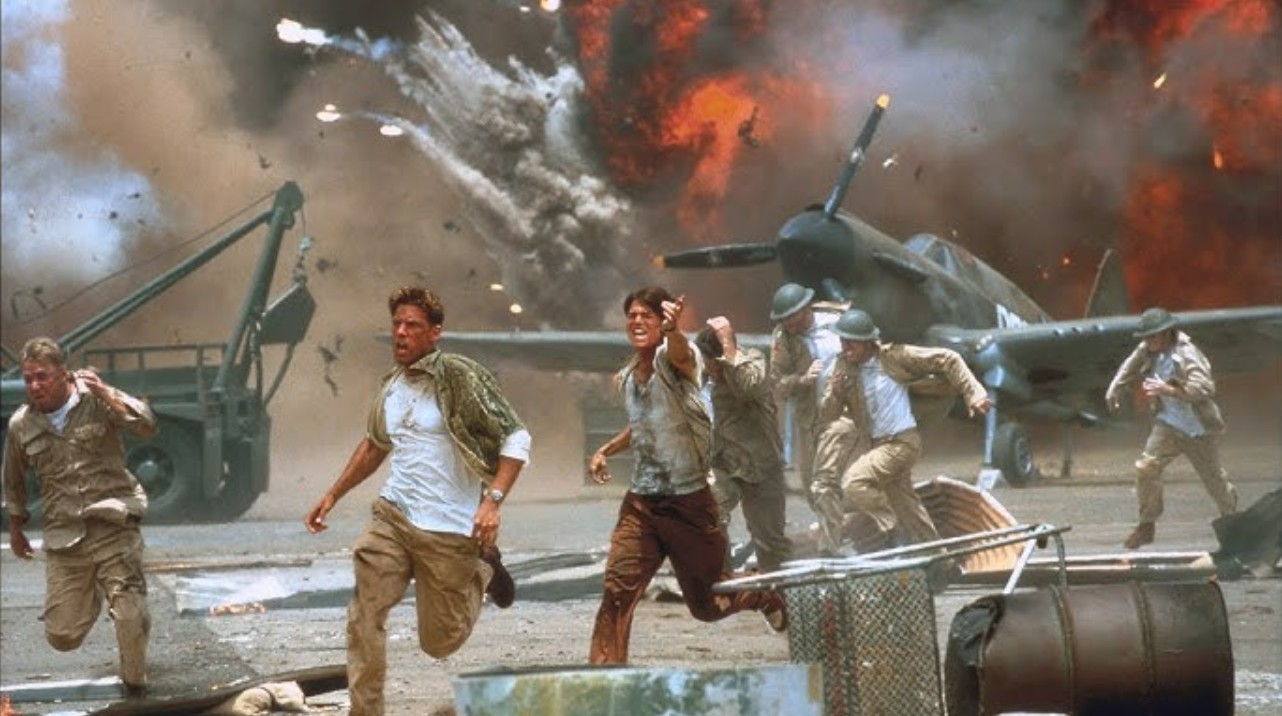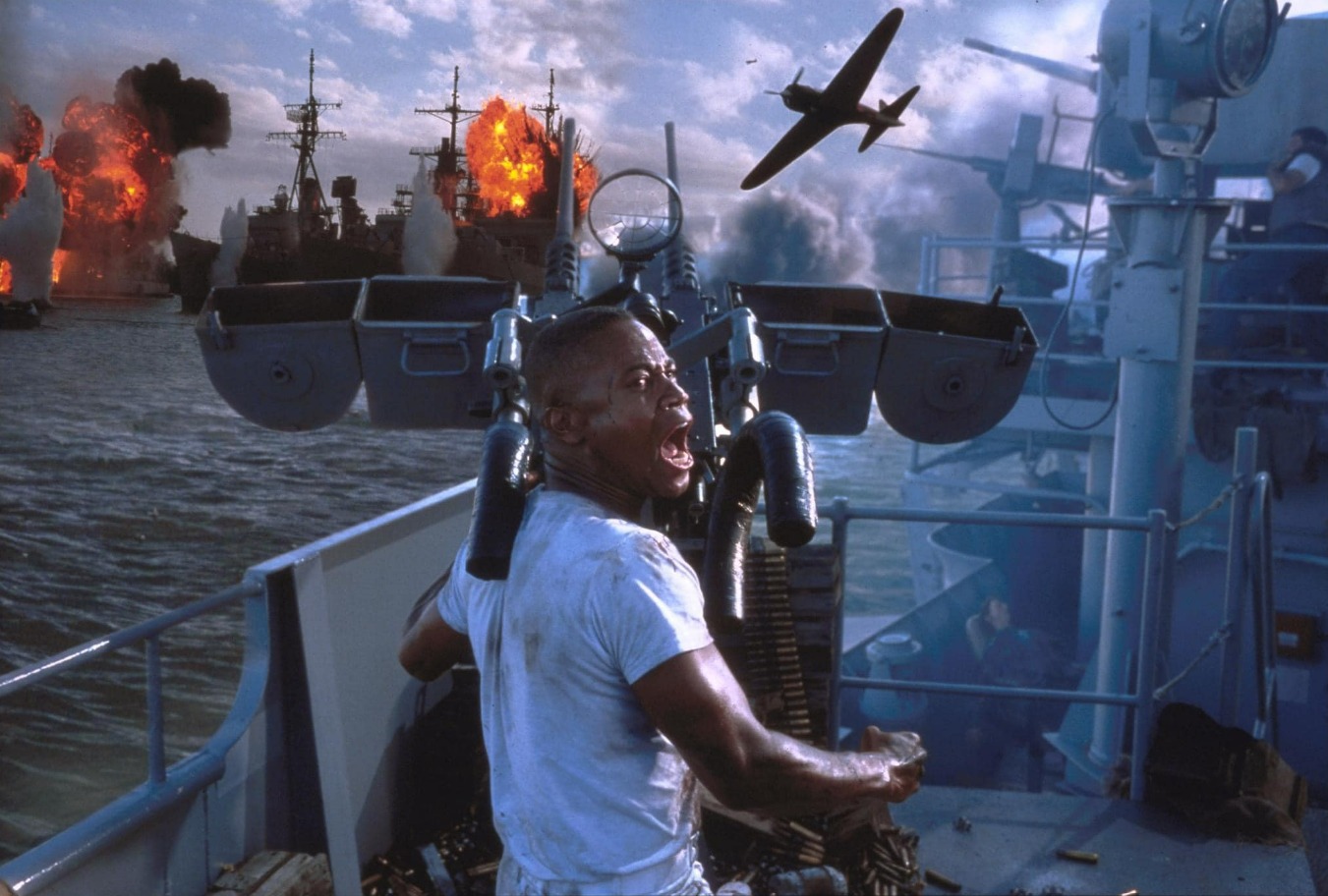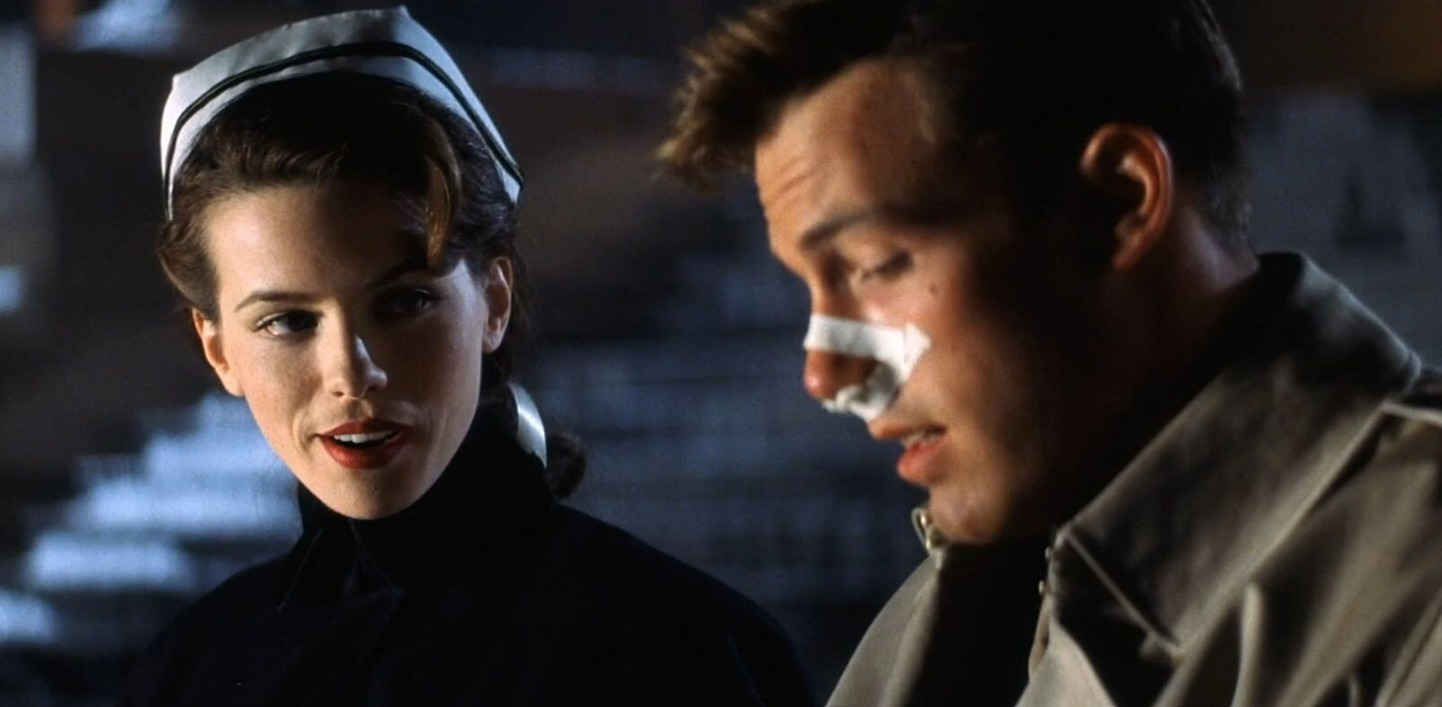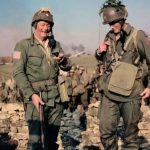“Pearl Harbor” (2001), directed by Michael Bay, is a sweeping epic that recounts the events of the infamous 1941 attack on the U.S. naval base in Hawaii.


Rafe falls in love with Evelyn Johnson (played by Kate Beckinsale), a dedicated Navy nurse. Their love story is interrupted when Rafe volunteers to fight with the Royal Air Force in Britain, leaving Evelyn and Danny behind in Hawaii. When Rafe is reported missing and presumed dead after his plane is shot down, Evelyn and Danny find comfort in each other and develop a romantic relationship.
However, Rafe survives and unexpectedly returns to Hawaii, creating tension and emotional conflict between the three characters just as the tension between the United States and Japan is escalating.
The Attack on Pearl Harbor
The film’s centerpiece is the meticulously recreated attack on Pearl Harbor, which unfolds in a series of dramatic and intense sequences. On the morning of December 7, 1941, Japanese forces launch a surprise aerial attack on the U.S. Pacific Fleet stationed at Pearl Harbor. The attack is depicted with spectacular visual effects and high-intensity action, showcasing the devastation wrought by the Japanese bombers and fighter planes.

Bay’s direction captures the chaos and destruction of the attack, with scenes of exploding ships, burning planes, and heroic but ultimately futile attempts by American servicemen to repel the attack. The film emphasizes the bravery of the American soldiers, sailors, and airmen who fought back against overwhelming odds, as well as the tragic loss of life.
Rafe and Danny, despite their personal conflicts, spring into action during the attack, commandeering two fighter planes and managing to shoot down several Japanese aircraft. Their heroism is highlighted as they navigate the fiery skies above Pearl Harbor, trying to defend their fellow servicemen.

Aftermath and Doolittle Raid
In the aftermath of the attack, the United States enters World War II, and the story shifts to the Doolittle Raid, a daring bombing mission over Tokyo designed to boost American morale and demonstrate that Japan is within reach of American forces. Rafe and Danny volunteer for this high-risk mission, solidifying their commitment to each other and their country.
The Doolittle Raid is depicted with the same attention to detail and dramatic flair as the Pearl Harbor attack, showcasing the bravery of the pilots as they take off from aircraft carriers and fly toward Japan, knowing they may not have enough fuel to return.

Themes and Reception
“Pearl Harbor” is both a love story and a war epic, blending fictional characters and relationships with historical events. The film explores themes of love, loss, friendship, and heroism against the backdrop of a nation at war. While it was praised for its special effects, action sequences, and historical attention to detail during the attack and subsequent battle scenes, the film also faced criticism for its length, melodramatic elements, and historical inaccuracies, especially concerning the romantic subplot.
Despite its mixed critical reception, “Pearl Harbor” was a commercial success and remains a notable entry in the war film genre, largely due to its spectacular visual effects and its depiction of one of the most pivotal moments in American history.

WATCH:











